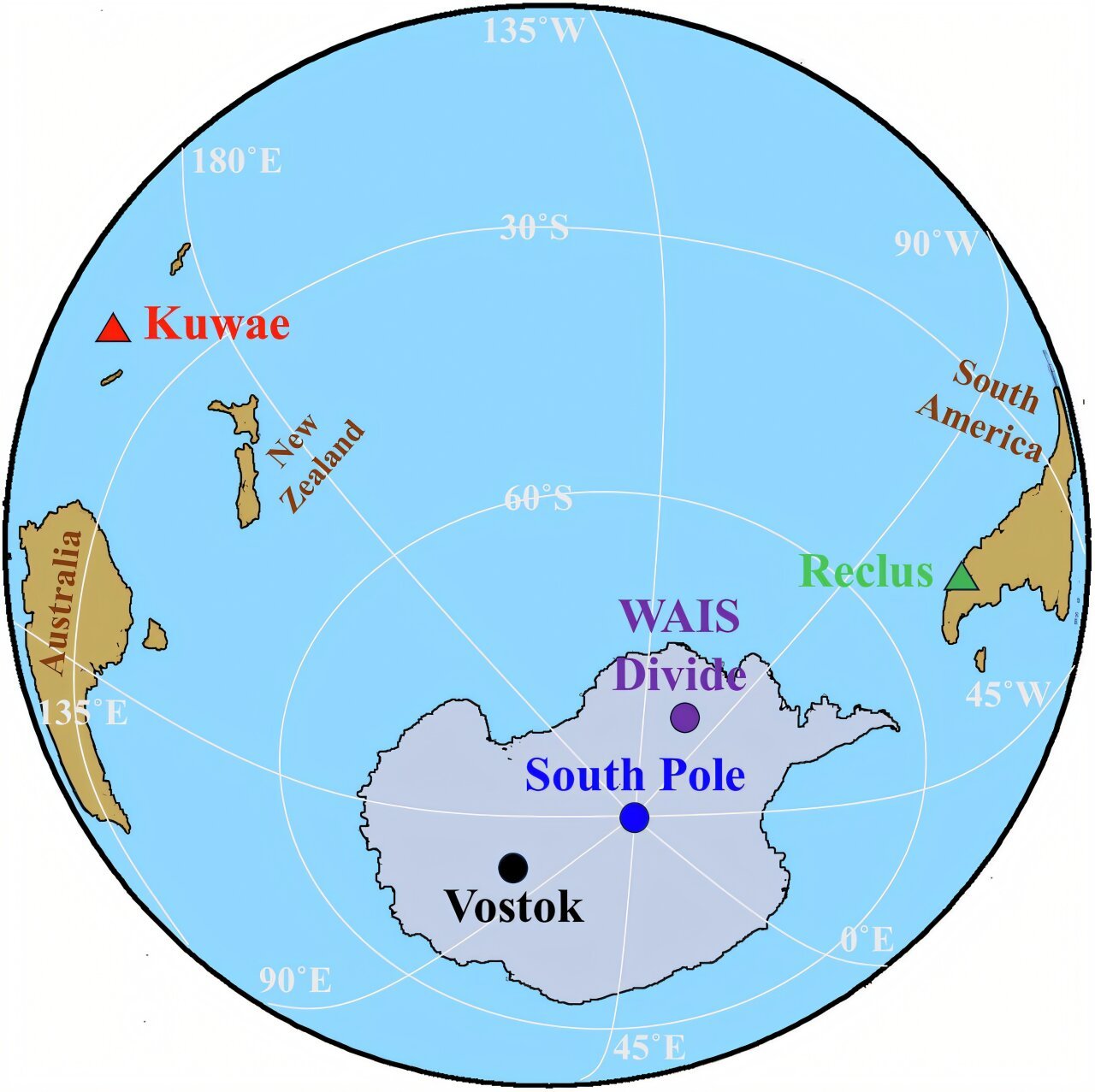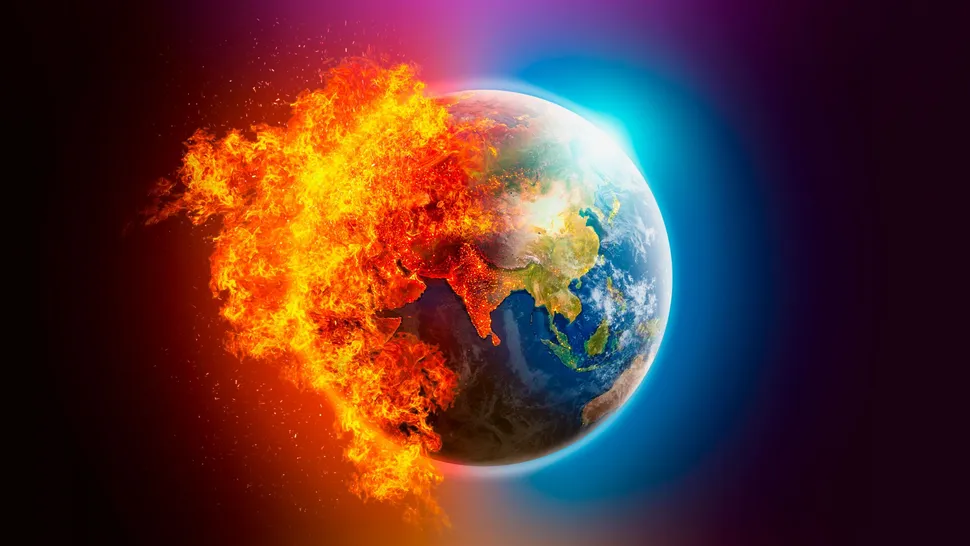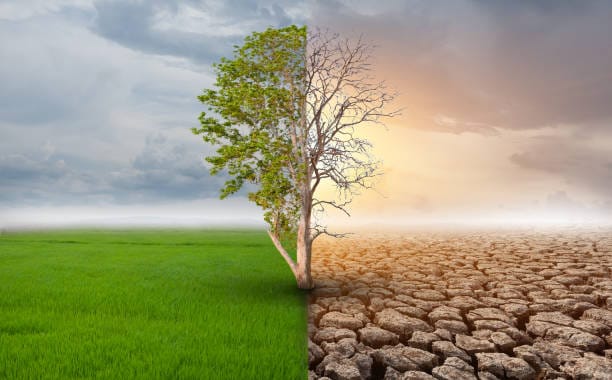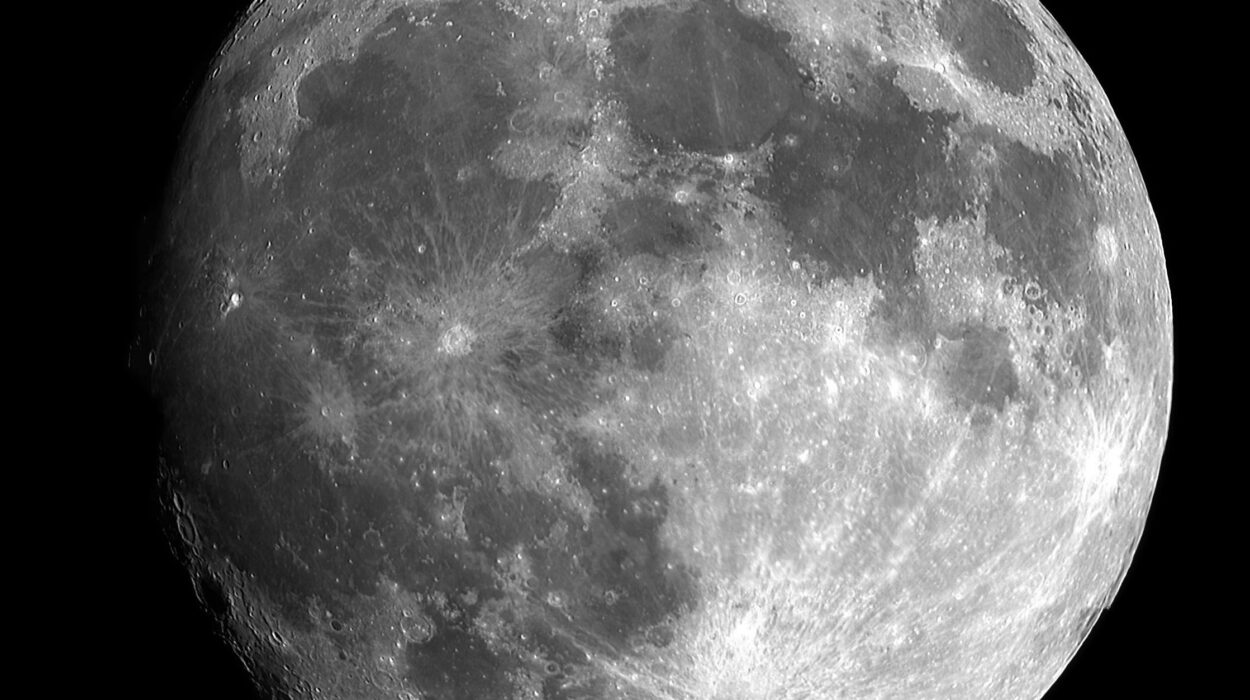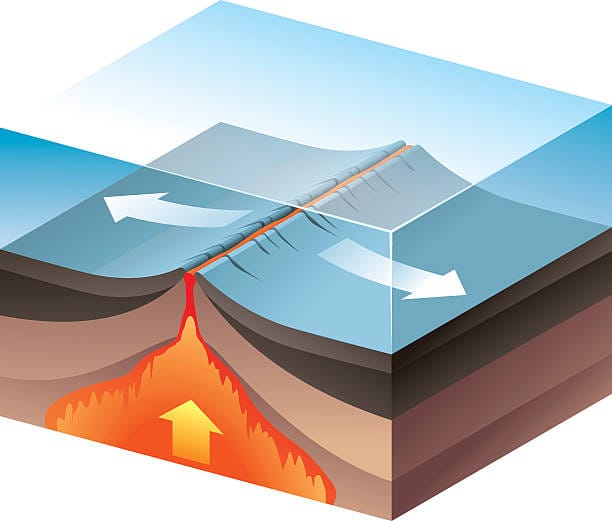Nearly six centuries ago, long before satellites or thermometers, the world suddenly chilled. Tree rings stopped widening. Glaciers crept forward. Harvests failed. Written chronicles from Europe and Asia name snow in summer and bitter cold after seemingly ordinary years. Later generations would not know the cause, but climate records preserved in ice would reveal the fingerprint of a catastrophe: an enormous volcanic eruption in 1458/59 CE that lofted sulfur and ash high enough to shade the planet for decades.
For years that eruption has been a mystery with two suspects. One group of scientists pointed to Kuwae, a tropical volcano in Vanuatu whose crater suggests a colossal blast in the 1400s. Others argued instead for Reclus, a volcano in Chile capable of sending cold air across the Southern Hemisphere. New research proposes that both sides were partly right and partly wrong — not one volcano but two erupted in near synchrony, their twin plumes colliding in the sky to dim the Sun.
Ice as a Witness to Fire
The evidence lives not in rock but in frozen water. Antarctic ice cores are time capsules: each layer of snowfall traps traces of whatever was in the air that year — sea salt, soot, gases, and microscopic shards of volcanic glass called cryptotephra. These glass fragments are chemical signatures of past eruptions, and the deeper the ice, the older the story.
Researchers from Korea and Russia found two such stories in one layer. When they extracted glass shards from ice corresponding to the 1458/59 cooling event, they expected a single chemical fingerprint. Instead they found a “bimodal” composition — two populations of glass with two distinct chemistries preserved side by side. Half matched Kuwae’s known signature. The other half did not match Reclus exactly, but it came from a Southern Hemisphere source with similar characteristics.
It is a rare thing for nature to give a double answer in such a clean way. The shards imply that two volcanoes erupted at roughly the same time: one tropical and known, one southern and still unidentified.
When Ash Confirms the Clock
Chemistry was only half the argument. Volcanic particles travel according to size and wind. Coarse ash falls fast; finer ash can drift thousands of kilometers before settling. The scientists tested how atmospheric circulation would have carried material from two different hemispheres. Their modeling showed that coarse particles from a Southern Hemisphere volcano would be likely to arrive first in Antarctica, followed later by the finer particles from a tropical volcano like Kuwae.
That is exactly what the ice showed. The stratigraphy — the sequence of deposition — lined up with a two-plume story.
This matters because the 1458/59 event was one of the most powerful eruptions in the last thousand years, strong enough to depress climate for decades. If two volcanoes erupted nearly together, their combined load of sulfur dioxide could have amplified cooling in ways a single model would underestimate.
A Solved Mystery That Creates Another
By naming two eruptions instead of one, the research does more than settle a debate. It opens a new mystery: what was the Southern volcano? Its chemistry resembles Reclus but not precisely. That makes the candidate “undocumented” — either a volcano we do not yet realize exploded in the 15th century, or one whose eruptive record has been erased or misdated in the geological archive.
The hunt now moves from ice to rock outcrops, lake beds, and marine sediments where ash layers may still wait to be matched with the cryptic glass in Antarctica.
Why an Old Eruption Matters Now
This is not only an archaeological victory. It is a calibration of how Earth cools. Large eruptions are test cases that allow scientists to validate climate models against what actually happened. If an event we thought came from one volcano actually came from two, then the old simulations need to be rewritten. Predictive models must allow for multi-plume cooling — what happens to the jet stream, the sulfur cycle, the monsoons, agriculture, and ice sheets when two hemispheres inject aerosols into the stratosphere at once.
The correction matters for the future because super-eruptions are not extinct. When the next large blast occurs — whether next century or next millennium — the quality of our forecasts will govern preparations for food security, water planning, and economic shock.
The World Remembers What We Forgot
The 1458/59 cooling episode left no videos, no satellite maps, no human witnesses who understood what they were seeing. Yet the world itself remembered. It inscribed the ash into ice and locked the cold into tree rings. Six hundred years later, with microscopes and mass spectrometers, we learned that the world had not suffered one wound but two delivered in near unison.
That is the quiet power of paleoclimate science — it teaches us that Earth’s past is not guesswork but record. And in that record we find not just answers, but rules: the climate responds to volcanic violence in specific, quantifiable ways. The better we decode those rules, the less we are surprised by the next plume that reaches the stratosphere and writes its shadow across the sky.
More information: Seokhyun Ro et al, Origin of the 1458/59 CE volcanic eruption revealed through analysis of glass shards in the firn core from Antarctic Vostok station, Communications Earth & Environment (2025). DOI: 10.1038/s43247-025-02797-x
